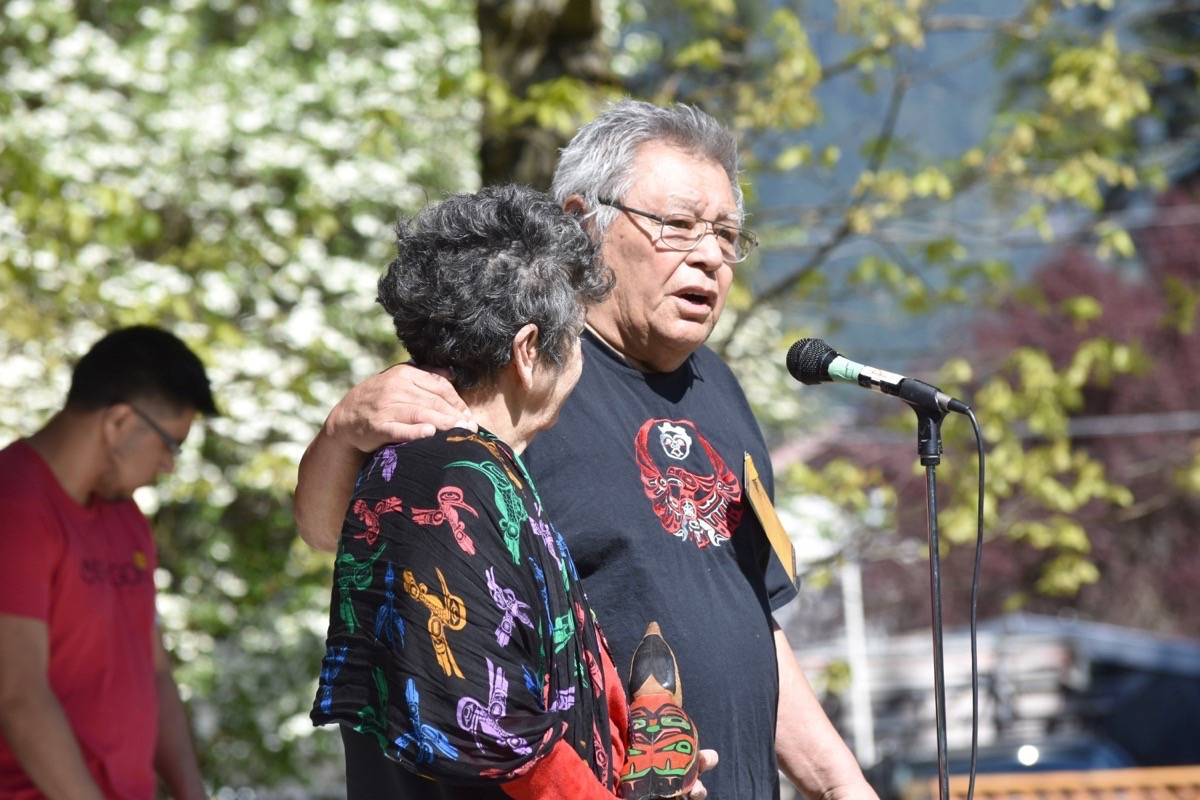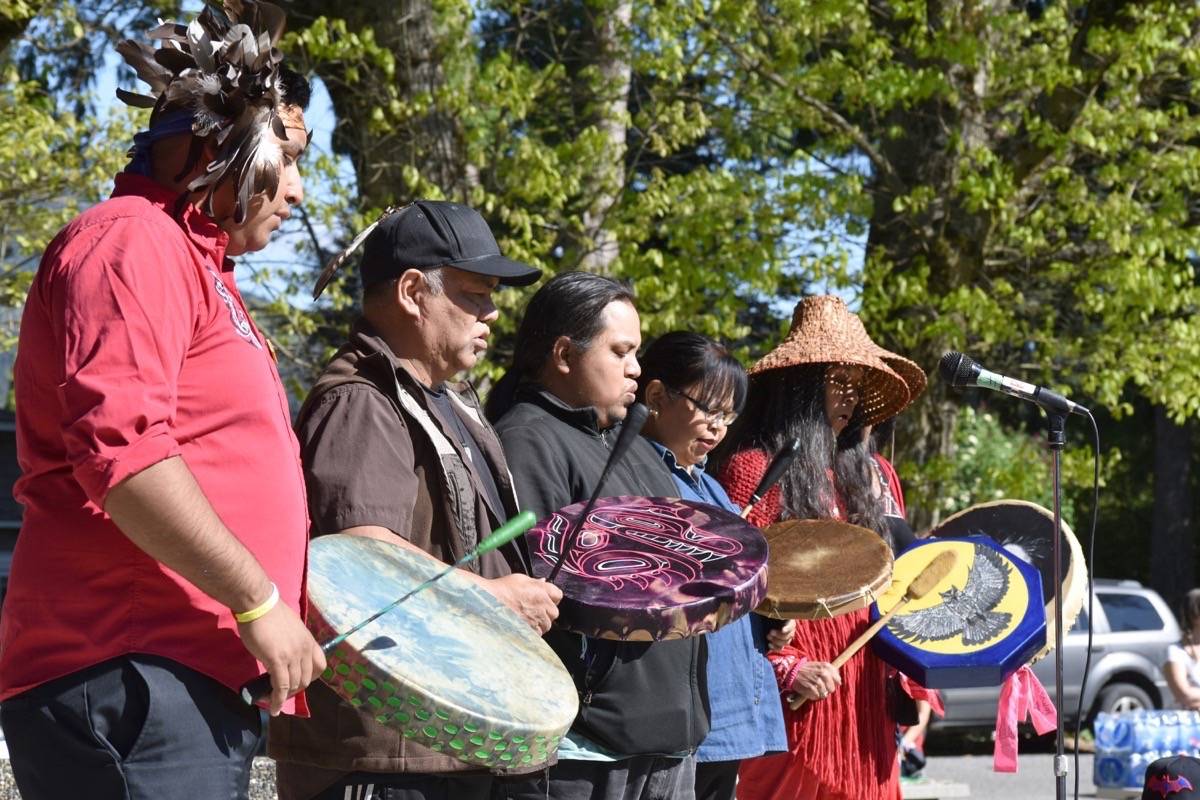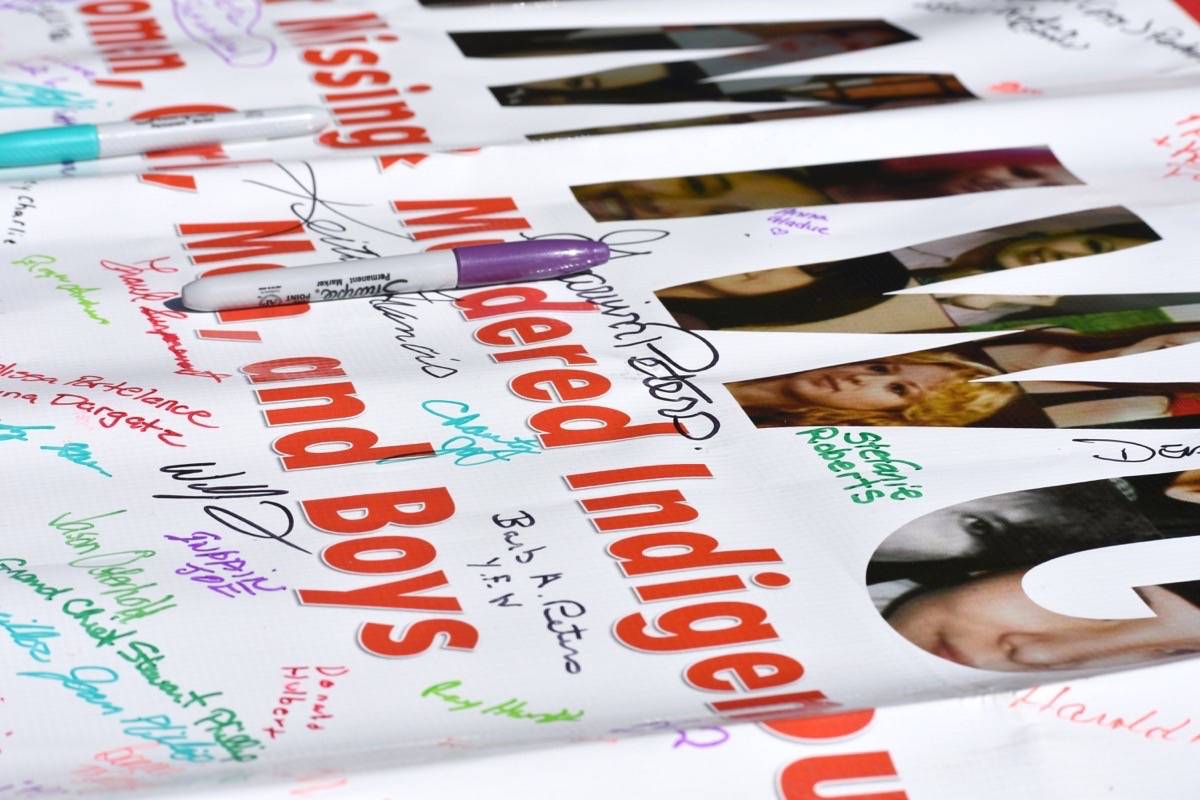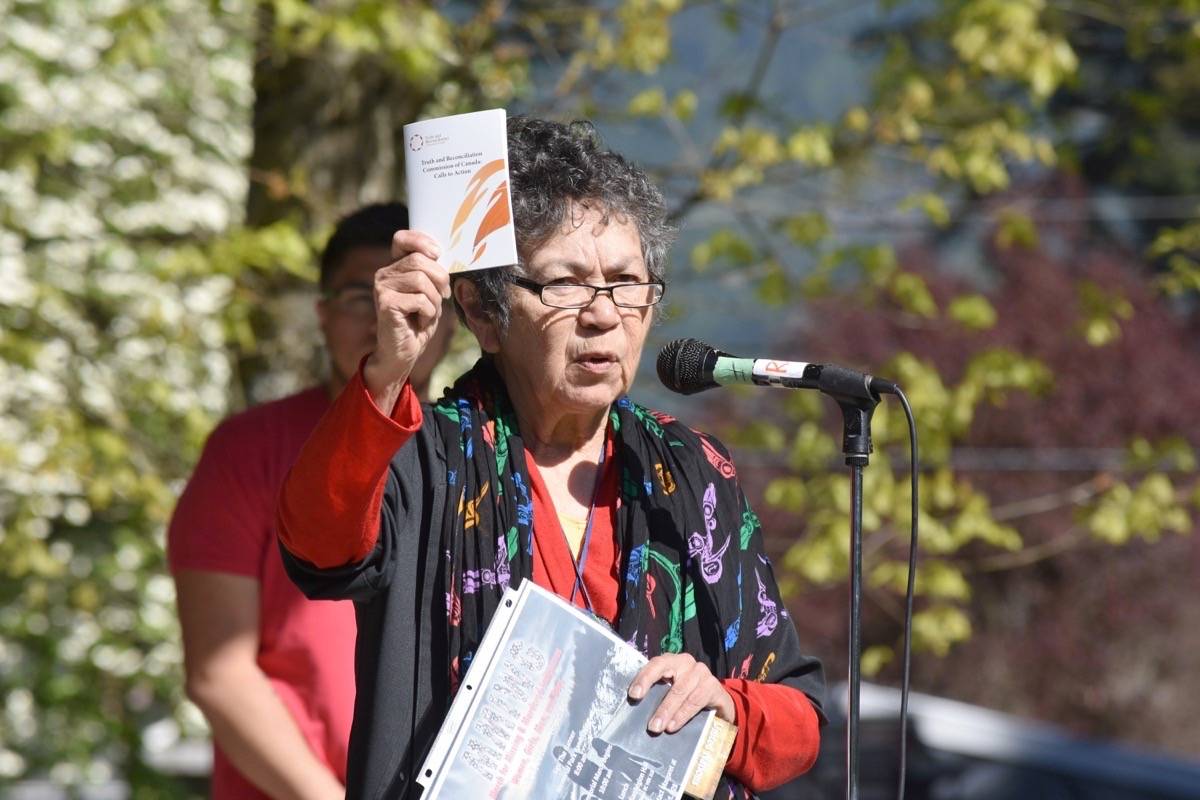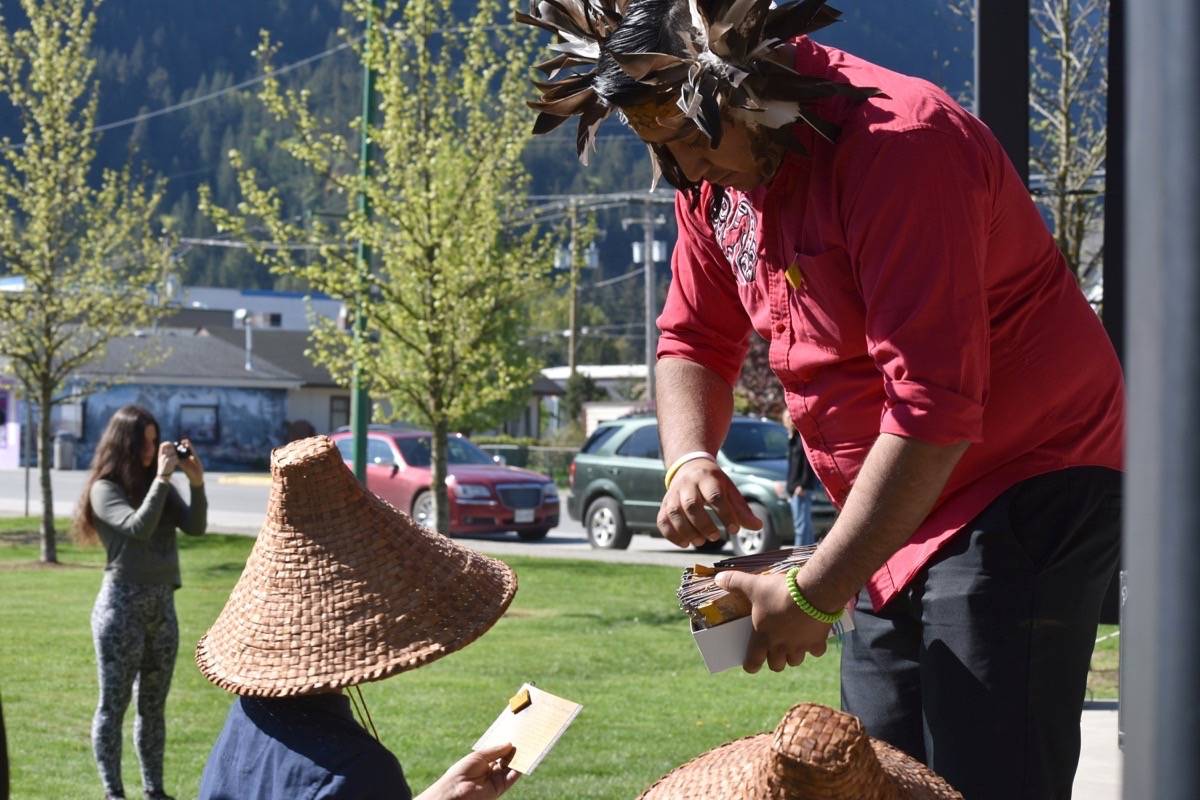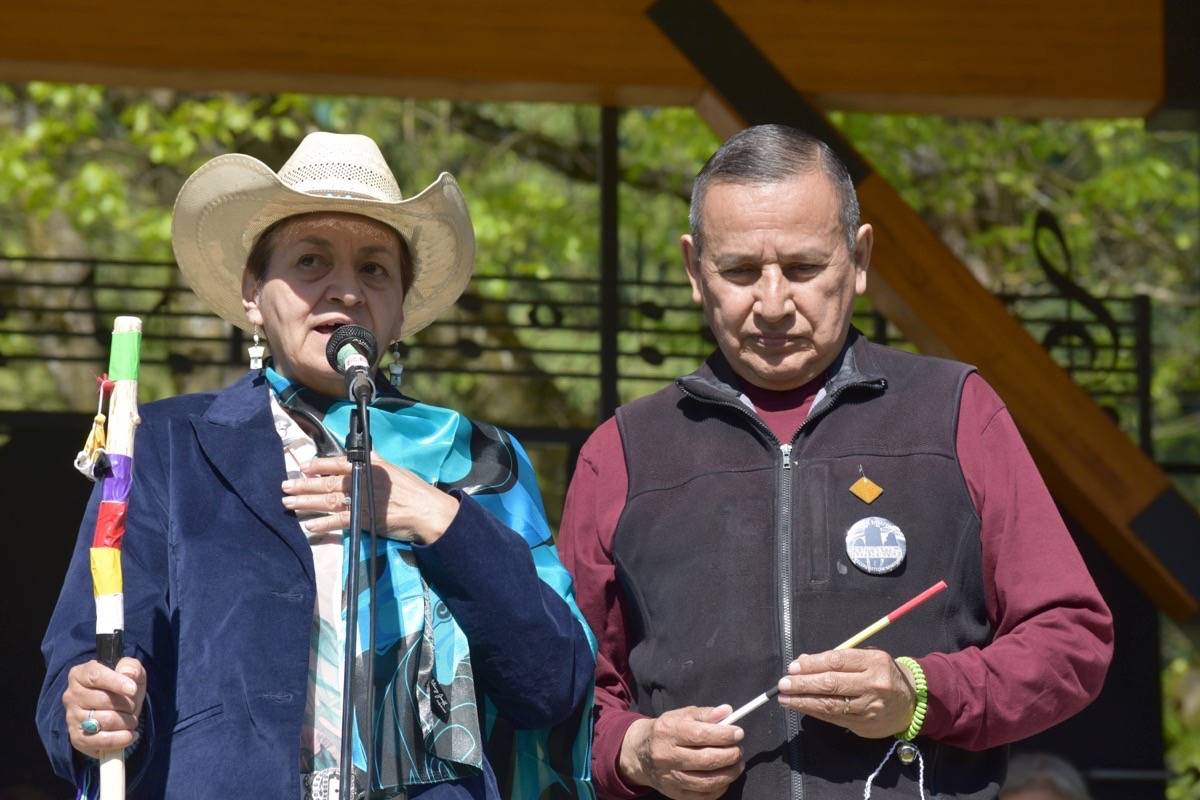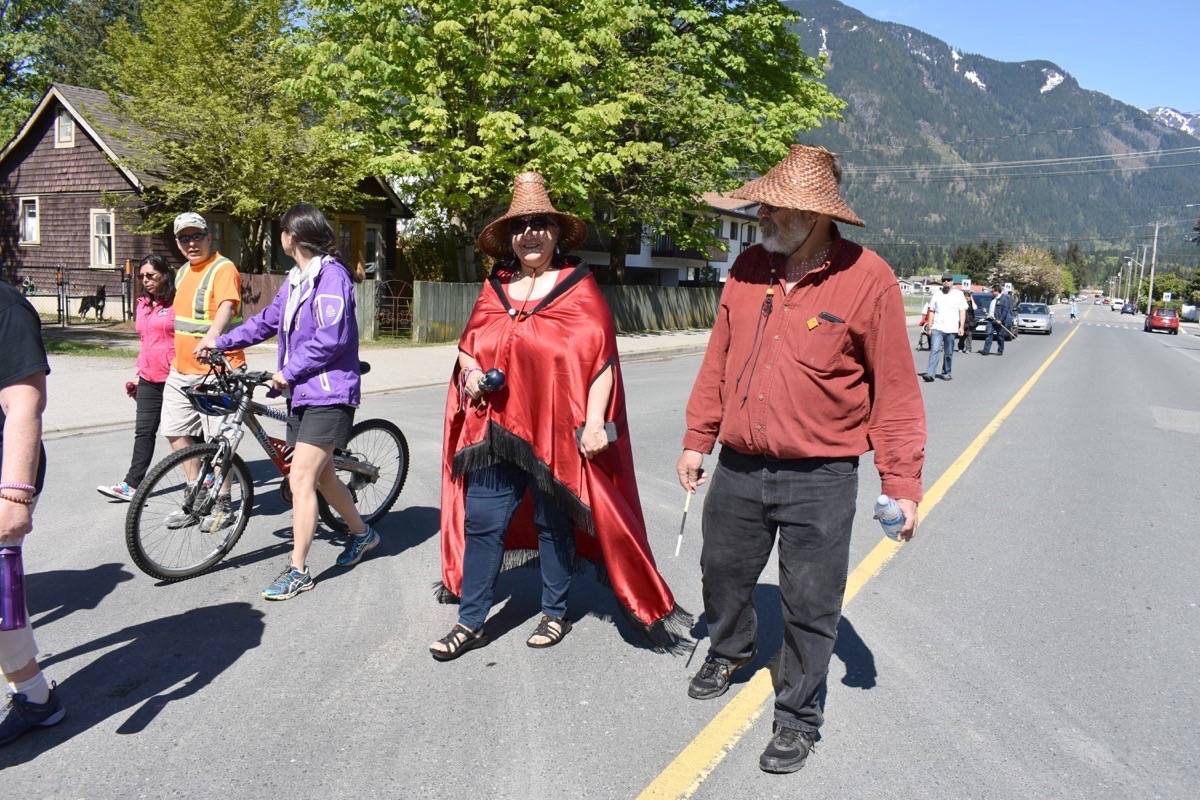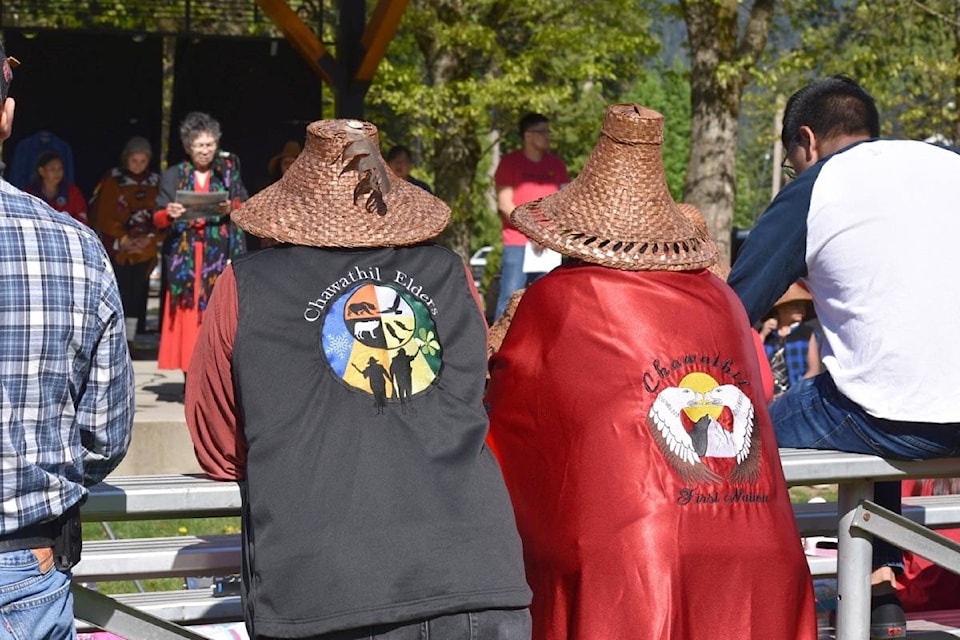For some who joined the March for Missing and Murdered Indigenous Women, Girls, Men and Boys through Hope May 5, the pain was fresh and raw, for others it was a dull ache and a yearning for closure — many who marched had lost loved ones who met a violent death or who are still missing.
The march drew people from all generations, young children to elders, and from many Indigenous communities — Chawathil, Shxw’owhamel, Yale, Sq’ewa:lxw (Skawahlook) and from further away, among them the Penticton Indian Band and the Kwikwasut’inuxw Haxwa’mis of Gilford Island. Non-Indigenous residents of Hope joined in, Hope’s Mayor Wilfried Vicktor was among them.
Emcee Kelsey John opened the march Saturday by speaking about the factors leading Indigenous men, women, children and Indigenous members of the LGBTQ community to face violence. At its core, he said, is the social and economic marginalization faced by Indigenous people perpetrated by government policies and the results are poverty, homelessness, high incarceration rates and prostitution.
John not only spoke of the systemic causes of this violence, but its direct effect on his own family.
“Every day that goes by I wish she was there to see our family grow,” he said of his sister Tanya, who was murdered in Mexico in 2009. “It’s something that I’m still coping with today and that many other families are still coping with. But together, when we stand strong, we can heal together.”
Winnie Peters, who marched in remembrance of her partner Rick Melanson who died after being stabbed 18 months ago, said she felt the presence of him as she marched. “It is horrible, it’s shocking to have to live with that and going on is hard at times,” she said.
Despite a federal inquiry into missing and murdered Indigenous women and girls, which as recently as April held hearings in Richmond, leaders in the Indigenous community say the realities of violence, police indifference and systemic discrimination remain.
“Women are still being abused, men are still being abused. They’re still going missing. Investigations aren’t taken that seriously,” said Joan Phillip. “Not much has changed over the years, racism is still rampant and in fact it’s starting to come to the surface again as a consequence of Trump and ‘it’s OK to be racist’.”
Joan traveled from Penticton with her partner and Grand Chief of the Union of B.C. Indian Chiefs Stewart Phillip. Vice president of the union Bob Chamberlin also came to march in Hope, along with Robert Phillips from the First Nations Summit.
Mayor Wilfried Vicktor said marching on Saturday was reminder about how closely violence affects residents of Hope.
“It’s easy to think that it maybe happens in the Downtown Eastside or on the Highway of Tears…but there’s a lot of locally impacted people here, through direct family and extended families,” he said.
He urged a society-wide zero-tolerance stance towards violence and abuse as well as having witnesses report any abuse they see, as he said those who commit grotesque offences like assault and murder have likely offended before.
Chief Maureen Chapman of the Sq’ewa:lxw reminded women of the power they hold within their Nations, to direct the work of their leaders.
“I’m here to say to the women at all levels, especially to the women at home. You are the backbone to what we do, you’re the ones that direct your chiefs to do the work. If it wasn’t for you, the chiefs wouldn’t have a job. Some of the chiefs would like you to believe the other way around, but that’s not the case. You are in charge,” she said.
Stewart Phillip, who travels with his partner Joan to hundreds of events each year, said the work is nowhere near done and only will be when change — political, social and bureaucratic — occurs.
“We need to continue to raise the public profile of the issue to the point where governments change their responses, police agencies are more responsive to the initial reports of missing Indigenous women and girls and the attitudes in our communities begin to change in regard to our respect for women,” he said.
Read more on the issue:
Is there more to this story?
news@hopestandard.com
Like us on Facebook and follow us on Twitter
